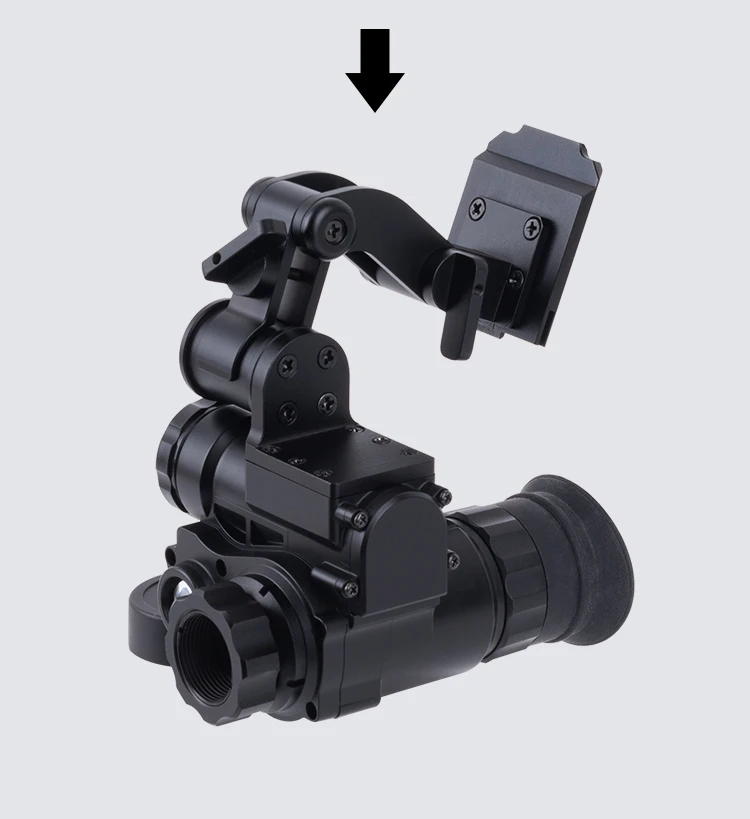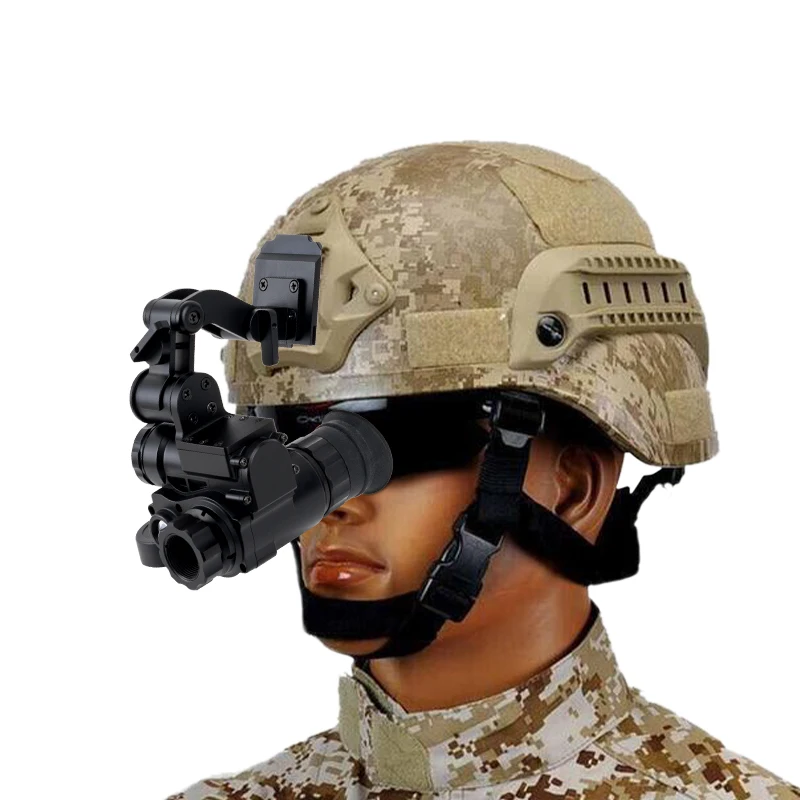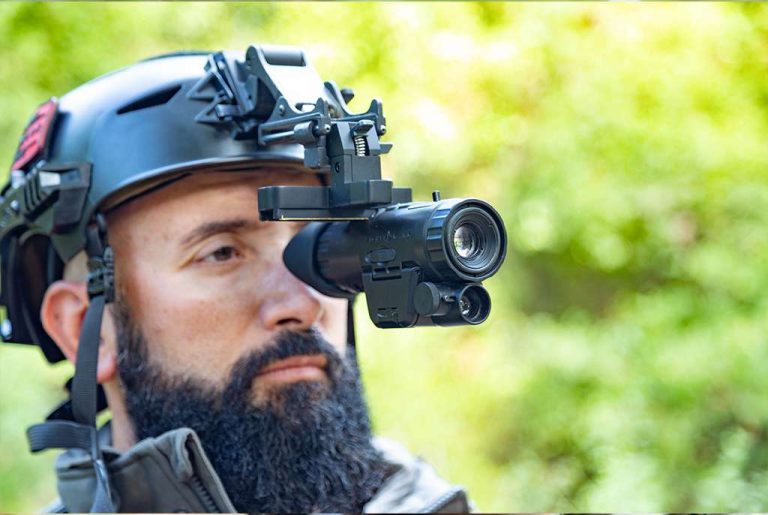Unveiling the Origins of Night Vision Technology
Night vision devices revolutionized military operations and civilian applications alike. These incredible optics grant users the ability to see in complete darkness. But when did this game-changing technology first emerge? When were night vision goggles invented?This blog explores the fascinating history behind the invention and evolution of night vision goggles (NVGs).
The Beginnings of Night Vision
The roots of modern night vision stretch back over 80 years. When were night vision goggles invented?In 1935, Hungarian physicist Kálmán Kandó invented the simple night viewing device known as the “Infrared Electrical Spectroscope.” Kandó’s creation was actually a very early thermal imaging camera. It detected infrared radiation emitted by objects and converted the signals into visible patterns on a display.
While groundbreaking, this rudimentary technology was bulky, laggy, and had extremely limited range/resolution. However, it provided humankind with its first glimpse of basic night vision capabilities. Countries realized the enormous military potential such technology could offer for nighttime surveillance and targeting.
The kálmán Kandó’s invention sparked an international race to develop more advanced and practical night vision systems over subsequent decades. In the 1930s, the German military made major strides by producing infrared night viewing devices for snipers, tanks, and vehicles during World War 2. But their equipment remained extremely limited in effectiveness overall.
Image Intensification Emerges
The real breakthrough occurred in the 1950s with the advent of image intensification. This technology would become the foundation for all modern night vision goggles as we know them today.
In 1958, French engineer and physicist Georges Machel received US Patent #2,887,540 for creating the first true image intensification device. It worked by using a photocathode to convert photons of light (even in near pitch-blackness) into amplified electrons. Those electrons then struck a phosphorous screen, with the amplified light creating an enhanced visible image.
The U.S. military quickly took notice. Investing heavily in further developing Machel’s technology, organizations like the U.S. Army Night Vision Lab created vastly improved iterations of image intensifier tubes throughout the 1960s. These vacuum tubes shrank in size while achieving greater light amplification up to 50,000x.
By the Vietnam War era, the first practical night vision goggles hit the battlefield. Models like the AN/PVS-2 allowed soldiers to finally view detailed human-shaped images and surroundings at night for the first time. However, the technology remained bulky and fragile with significant image distortion and other limitations.

NVG Miniaturization and Commercialization
While revolutionary, those early night vision optics remained imperfect. But steady refinements paved the way for familiar modern goggles recognizable today:
Smaller Image Tubes
Throughout the 1970s, image intensification tubes shrank immensely in both size and power requirements. Microchannel plates and fiber optics enabled much smaller night vision systems suitable for goggles.
Higher Resolution
Resolution skyrocketed as ion-etched optics, higher voltage tubes and improved Gallium Arsenide photocathodes emerged in the 80s. Clearer, sharper images resulted.
Gated Imaging
For extreme low-light conditions, specialized gated NVGs like the AN/PVS-7B cycled between closing/opening the shutter to amplify faintest ion flashes.
Dual-Tubed PVS-7s
This iconic night vision goggle design placed two independent image intensifier tubes in line with each eyepiece for binocular depth perception.
Helmet Mounting
Special mounts like the AN/PVS-15 enabled users to keep night vision goggles hands-free on helmets for protracted usage.
While the U.S. military drove most advances, Russia, France, Britain and other nations also produced competing NVG systems. Each introduced unique innovations like automatic brightness controls and eye-safe laser illuminators.

Commercial Applications of Night Vision
As the technology matured from the 70s onward, night vision spread into civilian and commercial sectors as well:
Law Enforcement
SWAT teams, police air units and maritime patrols began adopting NVGs for conducting operations at night safely.
Hunting/Wildlife Observation
Dedicated night vision scopes, goggles and binoculars enabled hunters, researchers and outdoors enthusiasts to view nocturnal wildlife up close.
Security/Surveillance
Commercial security firms integrated night vision cameras into CCTV systems for 24/7 property monitoring.
Navigation
Night vision helped pilots, ship captains and motorists operate vehicles during low-light conditions with enhanced visibility.
Space/Astronomy
Intensified optics revolutionized astronomical observations by scientists studying faint objects and events like nebulae and eclipses.
While not as advanced as military-grade models, these commercial night vision devices rapidly found new use cases in every major industry by the 1990s onward. The technology went from esoteric military secret to ubiquitous consumer product in just decades.
The Next Evolution
When were night vision goggles invented?Night vision technology continues evolving rapidly today. The latest innovations span both military programs and commercial realms:
Fused Night Vision
By combining thermal infrared and intensified visible imagery, modern fusion goggles enhance detail recognition further.
Digital Night Vision
Digital sensors replace traditional analog image tubes with improved range, recording and wireless connectivity.
Augmented Night Vision
Overlaying digital displays and targeting reticles onto nigh vision optics through augmented reality creates smarter battlefield capabilities.
Compact Consumer Units
As electronics miniaturize, intensified night vision modules now integrate easily into smartphones, drones, cameras and surveillance systems.
Enhanced Photocathodes
New nanomaterials like Indium Gallium Arsenide provide higher quantum efficiency photocathodes for intensifying extremely low light levels.
Artificial Intelligence
Machine learning algorithms can now identify targets, enhance object recognition, and reduce noise/blurring through night vision optics.
While night vision has origins dating back over 80 years, the core technology still advances at a breakneck pace. Future iterations will undoubtedly introduce even more incredible low-light visual capabilities for military personnel, law enforcement, scientists, outdoorsmen and consumers globally.

Seeing Through the Night
In the end, night vision technology fulfilled humankind’s long quest to conquer darkness and see clearly through the night. What began as theoretical experiments evolved into an entire industry pioneered by inventors and scientists across generations.
While initially reserved for military reconnaissance, this powerful optical technology quickly diffused across countless consumer and commercial sectors too. Today, night vision empowers people across all walks of life to navigate and thrive during nighttime conditions safely.
As electronics miniaturize and sensors improve, night vision optics continue growing more compact, powerful and affordable annually. Emerging innovations will ensure this transformative ability to see in the darkest conditions remains a game-changer for decades to come. Thanks to the brilliance of night vision pioneers, our world has grown infinitely more illuminated.






+ There are no comments
Add yours